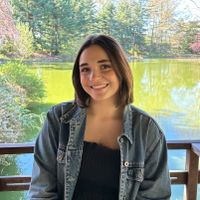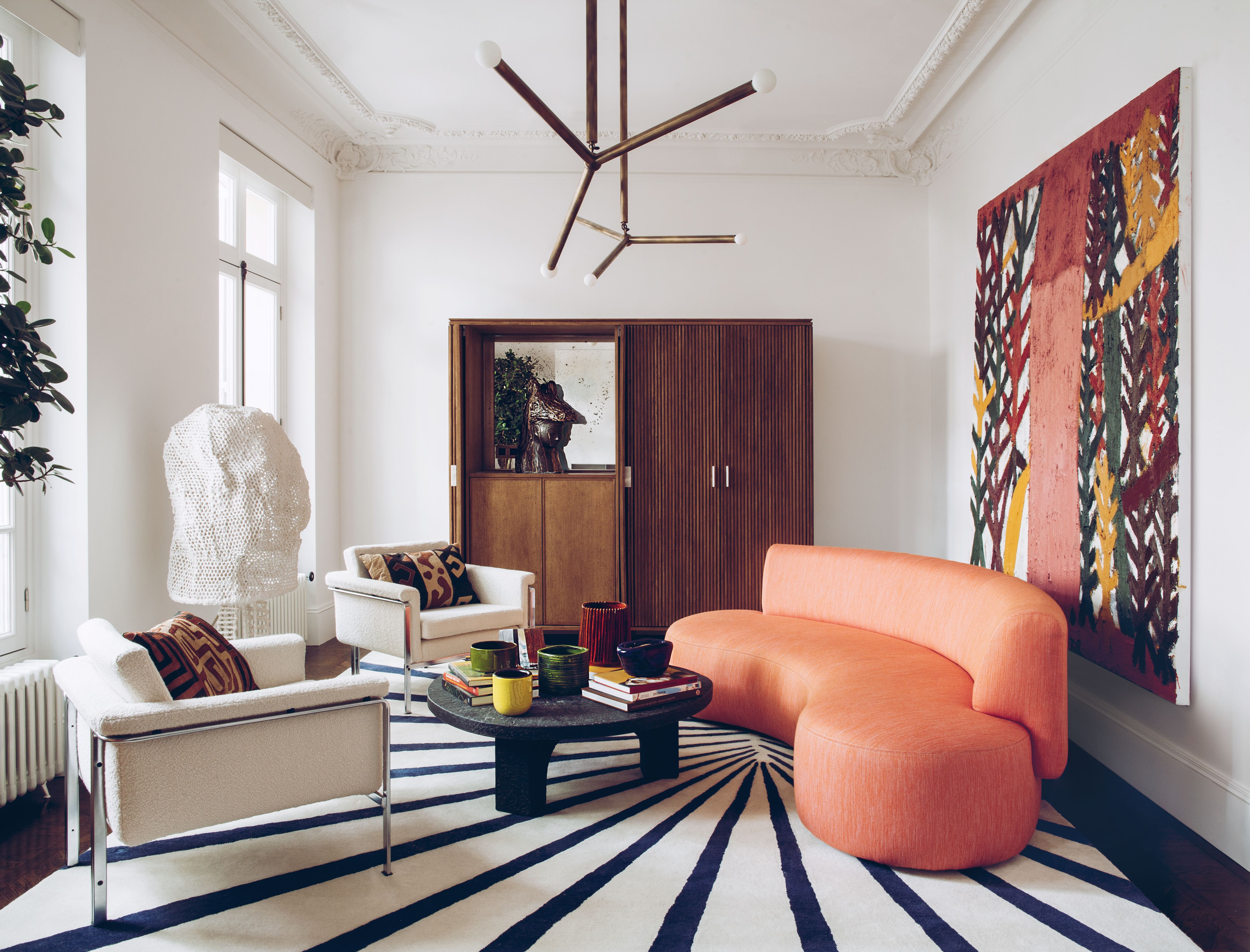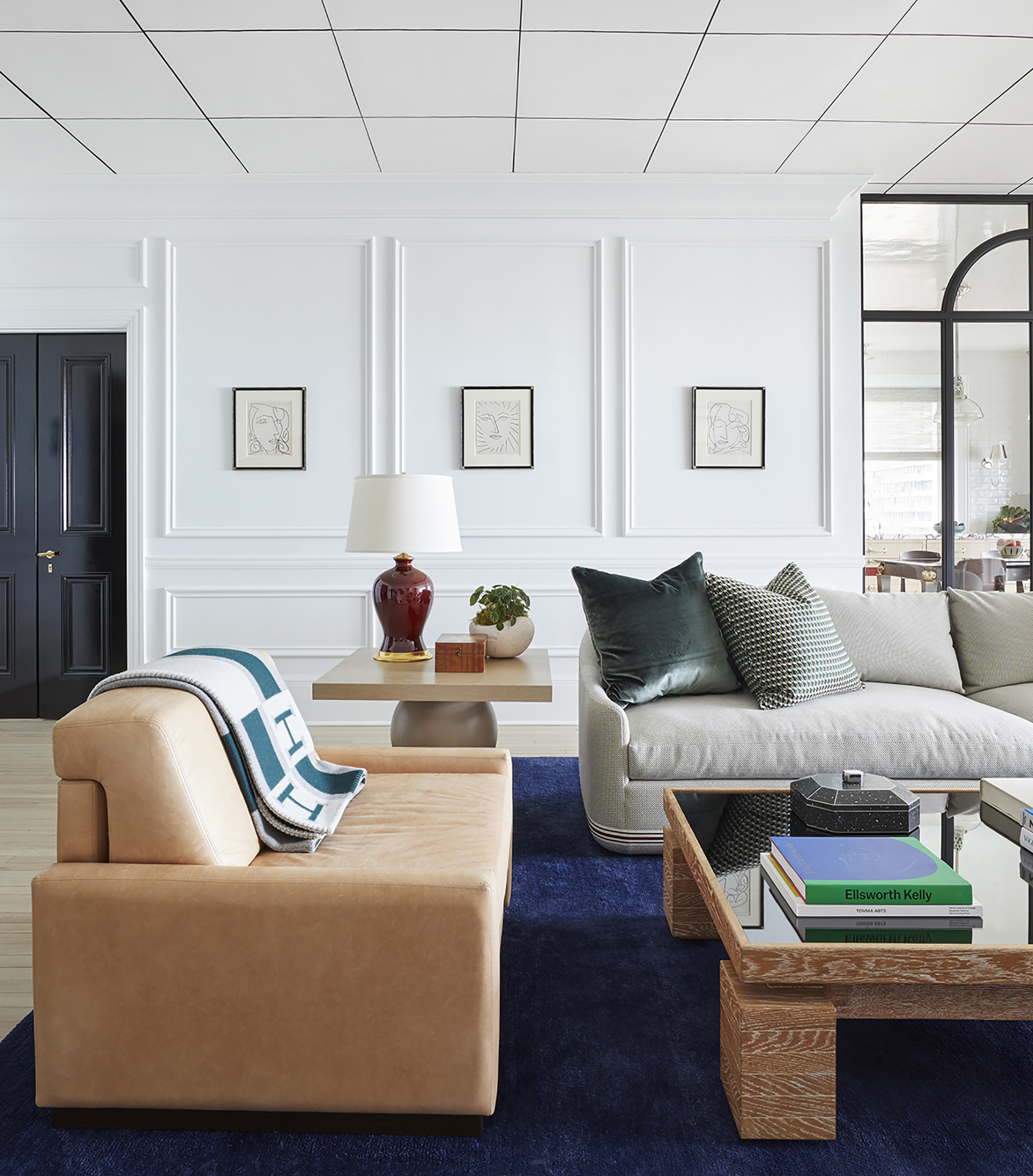Should a Sofa Touch the Wall? How to Tell if This Couch Placement Is Right For You
There is really just one exception to this widely accepted and widely followed rule. Here’s what you need to know

Luke Arthur Wells

When you think about it, much of interior design is (quite literally) smoke and mirrors. We’re constantly cooking up new and exciting ways to use shape, perspective, and color, among other tricks to transform a room’s look and feel. You can, for instance, play with lamp height to make a ceiling appear taller. Or, you can add mirrors to make a space appear larger. It’s somewhat counterintuitive, sure, but these optical illusions almost always pay off.
Take couch placement, for example. Although you might think it most sensical to push your sofa up against the wall where it’s out of the way, a different seating arrangement might be the most visually pleasing and functional for your space. It all depends on the room size and how much empty floor you have to work with. But if you don’t choose right, you might inadvertently make your room look smaller than it is, and we all know the best sofas deserve better than that.
Here’s how to tell whether your sofa should touch the wall, according to the experts.

WHEN SHOULDN’T MY SOFA TOUCH THE WALL?
Most designers agree, if you have the space, your sectional, loveseat, or three-seater should never touch the wall.
Instead, try “floating” your furniture in the center of your living room to build a custom vignette. The back of your couch (or couches, depending) will do the work of a wall or door to separate one living zone from another. Such an arrangement is infinitely chicer than the alternative — furniture, including a sofa, pressed right up to the wall.
“In larger spaces, floating a sofa means positioning it away from the walls to allow traffic to flow around the room’s perimeter,” says Mackenzie Collier of Mackenzie Collier Interiors. “This setup can make the room feel more spacious and balanced and is often seen as a sign of affluence in the design world.”
If you do go this route, however, just be sure your sofa’s dimensions allow enough space; you can measure to find out. “For a comfortable flow of traffic around the perimeter of a room, ideally, there should be at least 36-60 inches of free space between the edges of your seating arrangement and the walls,” she adds. “If you are floating your sofa in the center of the room, anchor the seating arrangement with a large rug, ensuring all four legs of the sofa are on the rug.”
The Livingetc newsletters are your inside source for what’s shaping interiors now - and what’s next. Discover trend forecasts, smart style ideas, and curated shopping inspiration that brings design to life. Subscribe today and stay ahead of the curve.

WHEN SHOULD MY SOFA TOUCH THE WALL?
You should still avoid it if you can, but a sofa up against or back near the wall is much more acceptable and commonplace in smaller spaces (even when sofa trends suggest otherwise).
In this case, some interior designers, like Lisa Staton of Lisa Staton Design, believe “there should be a small gap at least” between the back of the couch and the wall. “Just a few inches is fine, and often the baseboard keeps the sofa forward and stops it from feeling crunched against the wall,” , she tells Livingetc. The resulting optical illusion (back to the smoke and mirrors) is usually one of depth, which goes a long way in a small space.
But if you don’t have the room even for that, it’s okay. “Assuming you do not have the space to float your sofa, I recommend going back as far as your room allows,” counters interior designer Becky Shea of Becky Shea Design. “If you have plugs you need access to or windows with drapes that fall behind the sofa, give yourself just enough clearance and nothing more. You'll only be making your room feel smaller if you pull it off further than is needed without going full-on ‘float.’”
In short — try at least an inch off the wall and see if you like it. If you can spare the room and it looks good, that’s probably your best bet. If you must push it back further, you can — but only bump it flush against the wall if necessary for traffic flow and space.
FAQs
How can I keep my sofa from touching the wall?
Now that you’ve decided to pull your couch back from the wall, you’ll have a new problem; how do you keep it in place? Couches shimmy and shift every time they’re used, and it’s a pain to readjust their positioning every night (even worse if they’re chipping the paint off your walls).
If you have a rug underneath your couch, try investing in a “high-quality ½” or 1” wool felt rug pad,” Mackenzie suggests. “This will make the space feel lush and cozy while preventing furniture from sliding.” If you have kids or pets, “consider a less expensive cotton rug over a thick rug pad, which will feel soft underfoot and be easier to replace if needed.”
Your other options? One of the following three bumpers or stoppers that sit behind or underneath your couch to prevent slipping and sliding.
What Products Can Help Stop a Sofa Touching the Wall?
1. Acrylic couch stoppers, from Etsy — these clear stoppers blend right into the floor while preventing your sofa leg from moving flush against the wall. A genius invention that solves a common problem without sacrificing style (a huge win in my book). "These are perfect! Well made and perfect measurements," said one customer. "Great little invention to prevent damage to my walls, thanks!" said another.
Price: $28
Includes: 2 stoppers
2. Self Stick Non-Skid Gripper Pads, from Walmart — These best-sellers stick to the legs of your couches or armchairs to keep them from sliding on carpets or hardwood floors. Designed with a center cushion for weight absorption, they grip the ground while protecting it from the burden of heavy furniture. I'd use these more so in floating furniture schemes.
Price: $5.94
Includes: 4 pack of 2 1/2" round brown pads
3. Bumper Stoppers, from Amazon — While these blue foam bumpers are marketed for behind your headboard, you can just as easily stick them behind your couch. There, they'll act as a boundary between the wall and the sofa's back panel, ensuring the seating is at least 2.5" off the wall at all times. Even better, they'll absorb any shock should someone jump up on the couch and inadvertently shove it backwards. Purportedly reusable, with no screws, drilling, or damage to the wall.
Price: $24.88
Includes: 2 bumpers
All in all, it's best to avoid pushing your sofa against the wall unless you do not have the space. If styled and selected correctly, your room will still look chic and elevated. If you do have the room, try floating your furniture for an upscale, high-design vibe.
And now that we've figured that out, it's on to the next order of business: Can your put a sofa in front of a window?

Brigid Kennedy is a freelance writer and former style editor for Livingetc.com, where she scoured the internet for the best and most stylish deals on home decor and more. She also served as the website's in-house sofa expert, completely revamping and reworking Livingetc's expansive sofa buying guide by interviewing a total of 17 interior designers and sofa experts at top brands like Article and Benchmade Modern; sitting on upwards of 50 sofas across both Pittsburgh and New York City; extensively polling her friends and family for their own sofa-buying anecdotes and product recommendations; and traveling to Dallas, Texas, to tour the floor of a couch factory. In total, she estimates she has spent 40+ hours (and counting!) reading, writing, and talking about couches with accredited sofa connoisseurs o then pass that knowledge on to you. She describes her personal design style as colorful and clean, and in her free time enjoys reading, watching movies, and curating impossibly niche playlists on Spotify. She recently relocated from Manhattan to Pittsburgh, Pennsylvania, where she's decorating and DIYing a new home downtown.
- Luke Arthur WellsContributing Writer